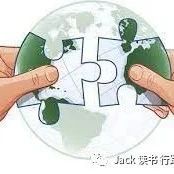Globalization and Multipolarity 全球化与多极化
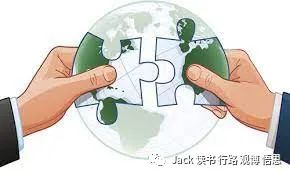
According to geopoliticalfutures.com, in 2018, the world is unipolar, and it is globalized. In 2021, after the first peaks of COVID, the world is changing at an astonishing pace. There is still much uncertainty about where the future would lead. From my point of view, in this post-pandemic era, the world will become both globalized and multipolar, possessing new characteristics and requiring the establishment of new orders.
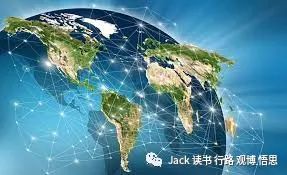
But first, what is globalization, what is multipolarity? These are key concepts that we encounter sometimes on a daily basis, and interpretations differ. Globalization can be defined as when businesses or countries “develop international influence” or begin “operating on an international scale”. Multipolarity, on the other hand, is a “distribution of power in which more than two nation-states have nearly equal amounts of military, cultural, and economic influence”. There is an important difference between the two terms. Globalization is more about the intricate connections between civilizations, be it in the form of cooperation or conflict. For example, since China joined the WTO in 2001, the world market has been increasingly turning into an icon of globalization, because in this system of international trade and finance, countries globally connect with each other in the form of imports, exports, and capital flow. However, multipolarity itself focuses more on the gaps between civilizations. A multipolar world would be divided into culturally, politically, and economically defined regions. These regions are all distinct from each other and could have huge crevices in the form of widely different cultural ideologies, forms of government, or types of economy.
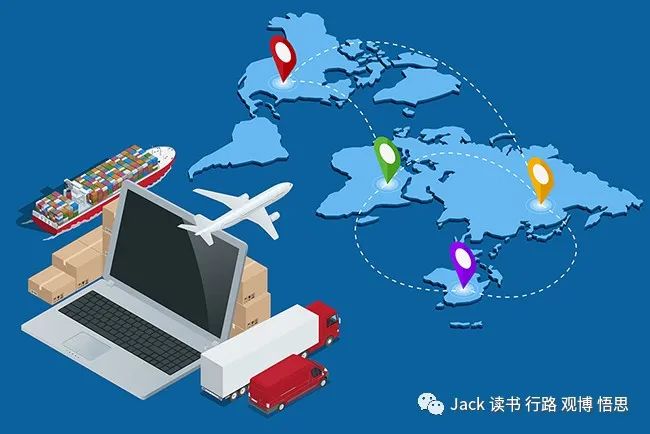
After the definitions of the keywords have been laid down, we can examine this part-globalized, part-multipolar world. There would still be evident traces of globalization, as the world still needs globalization to solve many of its key issues and to keep global systems working. For example, there would still be globalization in the form of global trade, though the numbers and the regions might be more limited to only certain trading regions. Most countries in the world recognize that by specializing and applying the Theory of Comparative Advantage, it can receive a wider range of goods at a lower price. Additionally, cultural exchanges, at least on a basic level, would persist. The common people would still want to enjoy the benefits of learning about different cultures and experiencing the wonders of cultural exchange. But cultural communication on the governmental level will be less frequent. Cooperation on important issues, such as climate change, social equality, wealth disparity, etc. would still be carried out on a global scale. Even the superpowers realize that these issues can only be solved with global collaboration with other countries, no matter developed or developing.

However, on the other hand, the world would become more multipolar in other respects. In the future, we would potentially witness the clashes between, state capitalism and free capitalism, democracy and dictatorship, as well as potential military races between the rising powers. The future world would be “dominated by America, the European Union, and a China-centric Asia”, according to Michael O’Sullivan, author of “The Levelling”. These multipolar regions would not communicate on a frequent basis and would choose their own paths of development. For example, American might work on establishing allies in Africa while China might work on the One Belt One Road Initiative.
Although there would be stark differences, these two sectors of the world would be connected in many ways. For instance, the “polars” can get head-to-head militarily facilitated by globalization and the connectedness that spans across. For another instance, if China decides to continue building the One Belt One Road, then America might use its global influence to try and stop China. This could prove to be another example of how multipolar regions compete with each other by utilizing globalization.
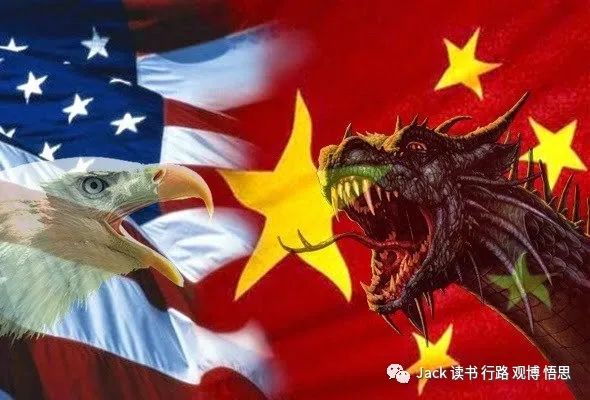
Under this both globalized and multipolar world, a key discussion would be: How would the Sino-U.S. conflict that has been lasting for years come to an end? Would China, in the future under the new environment, potentially push America off the horse and be the “big brother” itself? Paul Kennedy, the author of the renowned book “The Rise and Fall of the Great Powers”, feels positive for China, pointing out that “perhaps all that President Xi needs to do … is to avoid missteps and let China’s economy and military capacity grow …”. By doing so, China could present the most daunting challenge to American supremacy the latter has ever seen. I would say, that although the world has become more multipolar and more diverse, and that China will certainly become stronger in the future, it is still improbable that China would accomplish this mission.
Some people might claim that the U.S. cannot recover from failures like those in Afghanistan and Iraq, but that can simply be untrue. If you look like America's geography, it can be self-sufficient in nearly all of the key resources. It is self-sufficient in hydrocarbons, oil, minerals, etc. The country is connected by navigable rivers and has an economy of scale. There are many deep-water ports and access to sea lines of communication and trade. The borders with Canada and Central America do not pose significant national security risks whatsoever. According to Robert D. Kaplan, America can “miscalculate and fail in successive wars”, because it is exactly bequeathed with a natural environment hitherto unseen in any country, which allows it to quickly rehabilitate economically and militarily. Another major argument against this view is that people would not trust America any longer due to its fiasco in Afghanistan. While this might be true, the U.S. can regain the trust of its allies with careful diplomatic and political actions and by utilizing its global influence. It can lead the proposal of, for example, extending NATO into Asia, thereby limiting the rise of China even more. It can also, for instance, on U.N. conventions, back the decisions of its allies in its “pole”.
Another point that is relevant against this case is that America has numerous domestic issues still left to be dealt with, such as the growing wealth disparity, the constant outbreaks of COVID, increasing social conflicts, etc. Would not America be bothered and weakened by these problems that are turning worse every day? Admittedly, these problems can affect the U.S.’s power regionally and globally, at least for now. However, although American democracy seems to be in a mess and completely inefficient now, throughout history this government system has shown an inclination to “adapt and reinvent itself”. While America’s diversity can pose serious problems, it is still more or less its strength, and it will continue to attract talents that would contribute to the reinvention and adaption of the system.
Thus, it is not time for China to be overconfident. Because the world is still globalized in certain regions, America still retains many of its strengths, despite the existence of the current chaos. Even in many of the multipolar sectors of the world, America possesses a starting advantage over China, such as in military capacity, economics in terms of real GDP and productivity, and a democratic culture that continues to suck gifted young people to their country. A multipolar world is not necessarily defined by several countries sharing equal amounts of power, it is more about the rise of various states that begin to turn more important on an international level.
Overall, tomorrow’s world does hold myriads of possibilities, risks, and duels for power. While globalization has been showing itself as the dominant guideline for the international society, it would share a place with the trend of multipolarity in the future. These two concepts, although focusing on different aspects, are interlinked, and intertwined together. Without globalization, the creation and interactions of multipolar powers cannot take place. Without multipolarity, globalization will be unable to make a turn to adapt to the passing of time. Under such a context, the conflicts between China and the U.S. are likely to intensify and will become increasingly fateful. In the new world order, countries, especially the central hegemons currently, must brace themselves for the changes brought by the trend of history. Another major turn of global history has just started to occur, times are changing.
WORKS CITED
The Economist, and Paul Kennedy. "Paul Kennedy on Whether China's Rise Means
America's Fall." Economist.com, 1 Sept. 2021, www.economist.com/
by-invitation/2021/09/01/
paul-kennedy-on-whether-chinas-rise-means-americas-fall. Accessed 11 Sept.
2021.
The Economist, and Michael O'Sullivan. "Globalisation Is Dead and We Need to
Invent a New World Order." Economist.com, 28 June 2019, www.economist.com/
open-future/2019/06/28/
globalisation-is-dead-and-we-need-to-invent-a-new-world-order. Accessed 11
Sept. 2021.
PICTURES CITED
https://fee.org/articles/the-losers-of-globalization-didnt-lose-from-globalization/
https://strategika.fr/2020/02/09/multipolarity-and-open-society-geopolitical-realism-versus-cosmopolitical-utopia-pluriversum-vs-universum/
https://www.genimexgroup.com/blog-manufacturing-in-china-china-us-trade-war-tariff-timeline-2018/
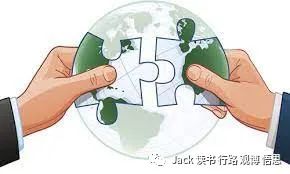
根据geopoliticalfutures.com,在2018年,世界是单极的,它是全球化的。2021年,在COVID的第一个高峰期之后,世界正在以惊人的速度变化。对于未来世界将走向何方,仍有许多不确定性。在我看来,在这个后新冠时代,世界将变得部分全球化、部分多极化,并将拥有新的特点和新的秩序。

首先,什么是全球化,什么是多极化?这些都是我们在日常工作生活中会遇到的关键概念,而且解释也不尽相同。全球化可以被定义为企业或国家 "发展国际影响力 "或开始 "在国际范围内运作"。同时,多极化是指 "两个以上的民族国家在军事、文化和经济方面的影响力享有几乎相等的权力分配"。这两个术语之间有一个重要的区别。全球化更多的是关于不同文明之间错综复杂的联系,无论是合作还是冲突的形式。例如,自2001年中国加入WTO以来,世界市场日益变成全球化的一个标志,因为在这个国际贸易和金融体系中,全球各国以进口、出口和资本流动的形式相互联系。然而,多极化本身更注重文明之间的差距。一个多极化的世界将被划分为文化上、政治上和经济上确定的区域。这些区域都是相互区别的,并且在文化意识形态、政府形式或经济类型上有很大的不同,它们之间可能有巨大的沟壑。

在确定了关键词的定义之后,现在是时候研究这样一个世界将如何结构化了。全球化的痕迹仍然很明显,因为世界仍然需要全球化来解决许多关键问题,并保持全球系统的运作。例如,全球化仍然以全球贸易的形式存在,尽管数量和地区可能更多地在未来会局限于某些贸易地区。大部分国家都能意识到,只有通过贸易并利用比较优势,才能以一个更低的价格得到更多的物品。文化交流,至少在基本层面上,也将继续存在。普通人还会想享受文化交融所带来的种种奇异的结果。在重要问题上的合作,如气候变化、社会平等、财富差距等,仍将在全球范围内进行。各国只有同意共同合作,不管是发展中还是发达的国家,才能解决这些问题。

然而,世界将在其他方面变得更加多极化。在未来,我们将有可能看到国家资本主义和自由资本主义,民主和独裁之间的冲突,以及崛起的大国之间潜在的军事竞赛。未来的世界将 "由美国、欧盟和以中国为中心的亚洲所主导",《平整》一书的作者迈克尔-奥沙利文写道。虽然会有明显的差异,但世界的这两个部分会在许多方面有联系。例如,各国只有在全球化和跨越的联系的促进下,才能在军事上正面交锋,形成多极化世界。如果中国想继续建设一带一路,那么以美国为首的对立一“极”就有可能牵头试图利用全球化来压制中国。

在一个既全球化又多极化的世界下,一个关键的讨论将是,已经持续多年的中美冲突将如何结束?在未来的新环境下,中国会不会有可能把美国推下马,自己做 "老大哥"?著名的《大国的兴衰》一书的作者保罗-肯尼迪对中国感到乐观,他指出:"也许习主席需要做的是......避免失误,让中国的经济和军事能力增长......"。通过这样做,中国可以对美国的霸主地位提出后者所见过的最艰巨的挑战。我想说的是,尽管世界已经变得更加多极化和多样化,而且中国在未来肯定会变得更加强大,但中国要完成这一使命仍然是挑战巨大的。
有些人可能会声称,美国无法从阿富汗和伊拉克这样的失败中恢复过来,但这可能根本不是事实。如果你理解美国地理,它可以在几乎所有的关键资源中自给自足,例如在在碳氢化合物、石油、矿物等方面。这个国家可由通航的河流连接,具有规模经济。美国有许多深水港,可以进入海上交通和贸易线路。与加拿大和中美洲的边界完全不构成重大的国家安全风险。根据罗伯特-D-卡普兰(Robert D. Kaplan)的说法,美国可以 "在连续的战争中失算和失败",因为它恰恰被赋予了迄今为止任何国家都没有的自然环境,这使它能够迅速在经济和军事上进行恢复。反对这种观点的另一个主要论据是,由于美国在阿富汗的惨败,人们不会再信任美国。虽然这可能是事实,但美国可以利用自己在全球的影响力,通过谨慎的外交和政治行动重新获得其盟友的信任。它可以牵头提出,例如,将北约组织扩展到亚洲,从而更加限制中国的崛起。它也可以,例如,在联合国公约上,支持其盟友的决定。
与此相关的另一点是,美国仍有许多国内问题需要处理,如日益扩大的贫富差距,不断爆发的COVID,不断增加的社会冲突,等等。难道美国不会因为这些每天都在恶化的问题而感到困扰和被削弱吗?诚然,这些问题会影响美国在地区和全球的权力,至少目前是这样。然而,尽管美国的民主现在看起来一团糟,而且完全没有效率,但在整个历史上,这个政府系统仍然表现出了强大的"适应和重塑自己 "的倾向。虽然美国的多样性会带来严重的问题,但这或多或少仍是它的优势,它将继续吸引有助于重塑该系统的人才。
因此,现在还不是中国过度自信的时候。因为世界在某些方面仍然是全球化的,尽管存在着目前的混乱局面,美国仍然保留着许多优势。即使在世界的许多多极领域,美国也拥有比中国更多的起始优势,例如在军事能力、实际GDP和生产力方面的经济,以及继续将有天赋的年轻人吸到自己国家的民主文化中。一个多极化的世界不一定是由几个国家分享同等数量的权力来定义的,它更多的是关于各个国家的崛起,在国际层面上开始变得更加重要。
总的来说,明天的世界确实有无数的可能性、风险和权力的决斗。虽然全球化已经成为国际社会的主导准则,但在未来,它将与多极化的趋势共享一个位置。这两个概念虽然关注的是不同的方面,但它们是相互联系的,而且交织在一起。没有全球化,多极化大国的产生和相互作用就不可能发生。没有多极化,全球化就无法实现转折,无法适应时代的发展。在这样的背景下,中美之间的冲突可能会加剧,并将变得越来越致命。在新的世界秩序中,各国,尤其是目前的中央霸主,必须为历史潮流带来的变化做好准备。全球历史的另一个重大转折刚刚开始,时代正在发生变化。
- 本文标签: 原创
- 本文链接: http://www.jack-utopia.cn//article/432
- 版权声明: 本文由Jack原创发布,转载请遵循《署名-非商业性使用-相同方式共享 4.0 国际 (CC BY-NC-SA 4.0)》许可协议授权
